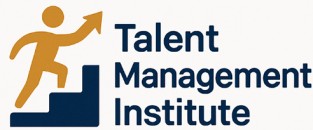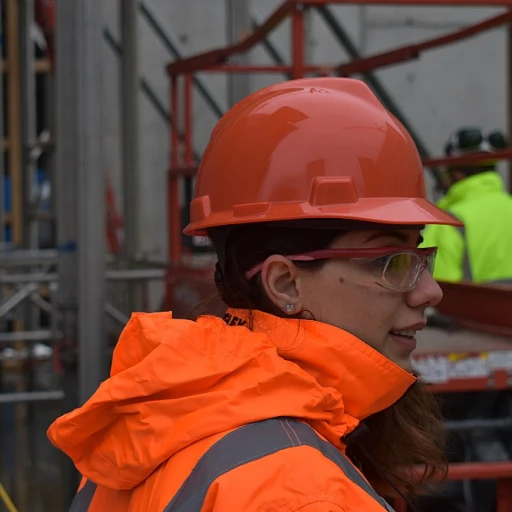
Defining Backfill in Talent Management
What Does Backfilling Mean in the Context of Talent Management?
In the world of talent management, backfilling emerges as a crucial concept. Essentially, backfilling refers to the practice of filling a vacant position that's created when an employee leaves or moves to another role within the organization. This strategy ensures that the organization's workflow remains uninterrupted. Backfilling can be seen as a short-term solution to address immediate vacancies, yet it can also be part of a long-term strategy, dovetailing with succession planning efforts. When a team member moves on, the company is faced with a decision: to find a replacement promptly, or to engage in more in-depth recruitment, seeking out ideal talent that fits the organization's culture and objectives. There's much to consider when it comes to deciding what approach to take for a backfill position. It often involves evaluating current employees, as they might be in a strong position to step up, thus easing the transition and reducing the recruitment process timeline. For those in talent management, understanding and efficiently executing backfilling strategies are vital for organizational stability and success. These strategies are supported by various tools and methodologies, such as management software and cross training, to streamline transitions and ensure that the right person is appointed for the role. To delve deeper into how professionalism can be elevated within human resources, click here.Reasons for Backfilling a Position
Why Organizations Opt for Backfilling
Backfilling a position is a common practice in talent management, driven by various organizational needs and circumstances. Understanding the reasons behind this approach can help in crafting effective strategies for maintaining team productivity and morale.
Maintaining Continuity and Productivity
One of the primary reasons for backfilling is to ensure continuity in operations. When a key employee leaves, it can disrupt workflows and impact productivity. By backfilling the vacant position promptly, organizations can maintain the momentum and avoid bottlenecks in their processes. This is particularly crucial in roles that are integral to the company's core functions.
Addressing Short-term and Long-term Needs
Backfilling can address both short-term and long-term organizational needs. In the short term, it helps fill immediate gaps, ensuring that the work continues without significant interruptions. For long-term needs, backfilling can be part of a broader succession planning strategy, where internal candidates are prepared to step into more significant roles over time.
Leveraging Internal Talent
Organizations often use backfilling as an opportunity to leverage internal talent. By promoting current employees to fill vacant positions, companies can boost morale and demonstrate a commitment to employee growth. This approach not only fills the immediate need but also strengthens the organization's talent pool by encouraging skill development and cross training.
Adapting to Organizational Changes
Changes such as restructuring, mergers, or expansions can create new roles or alter existing ones. Backfilling positions becomes essential in these scenarios to adapt to the evolving organizational landscape. It ensures that the company has the right people in place to meet new challenges and opportunities.
For a comprehensive understanding of job roles and descriptions, you might find this resource helpful.
Challenges in Backfilling Positions
Addressing the Challenges in Filling Vacant Roles
The process of backfilling a vacant position presents several challenges that can impact a company's talent management strategies. Successfully addressing these challenges is crucial for maintaining the effectiveness of the organization. Here, we identify some key challenges:
- Time Sensitivity: One of the significant hurdles in backfilling is the urgent need to fill a position. Losing an employee, especially a key role, can put pressure on the team to maintain productivity. Ensuring that the recruitment process aligns with the company’s time frame without compromising quality is vital.
- Lack of Prepared Internal Candidates: Organizations may find that they do not have prepared internal candidates ready to step into a role. This is often a reflection of inadequate succession planning and the need for more robust cross-training initiatives.
- Internal candidates, though familiar with the company culture, may not be adequately prepared to take on a new role immediately. This challenge can affect the time it takes to fill positions efficiently.
- Maintaining Team Dynamics: Introducing a new team member, whether long-term or short-term, can disrupt team dynamics. The existing team members may need to adjust their workflow and communication strategies which can temporarily affect the team’s overall performance.
- Integration of Technology: The use of management software and payroll software can streamline the recruitment and backfilling process. However, aligning the current employees and new hires to these technologies requires additional training and resources.
- Ensuring an Accurate Fit: A challenging aspect of backfilling is finding the right fit for the company environment, especially when hiring externally. It’s important to ensure that the job description aligns well with the role, duties, and expectations to prevent misalignment of goals and employee dissatisfaction.
Addressing these challenges head-on with clear strategies and informed decision-making will help organizations navigate the complexities of backfilling more effectively, ensuring not only short-term coverage but also long-term stability and growth. For a deeper understanding of maintaining team integrity during transitions, explore the 3-to-11 Rule in Customer Service which reflects on nurturing workplace relationships.
Strategies for Effective Backfilling
Approaches to Efficient Backfilling in Talent Management
Effectively managing backfilling positions requires strategic planning and execution. When filling a suddenly vacant position, it is crucial to not only focus on the immediate hiring need but also consider the long-term implications on the team and the organization at large. Here are some strategies to facilitate efficient backfilling and ensure a smooth transition:- Cross Training and Skill Development: Encouraging cross training among team members is one of the best practices in talent management. By developing a skill set across multiple roles, your current employees are more adaptable and readily available to backfill positions. This approach requires time investment but significantly reduces the disruption that follows a sudden departure.
- Succession Planning: Implementing a robust succession plan helps in identifying internal candidates who are prime for elevation. This practice not only prepares employees for future roles but also ensures that the company's top talent is retained by providing clear career advancement opportunities.
- Utilizing Management Software: Leveraging management software can streamline your recruitment process, ensuring a more efficient transition when a position becomes vacant. These tools can automate initial stages of recruitment, reducing the time and administrative burden associated with backfilling.
- Comprehensive Job Descriptions: Clear and accurate job descriptions are vital when backfilling a position. They provide a precise understanding of the role requirements and expectations, reducing the time involved in the recruitment and onboarding process.
- Balancing Short-Term and Long-Term Goals: While the immediate focus may be to fill the role quickly, it is important to also consider the long-term impact on the company. Balancing short-term hiring needs with strategic talent management can lead to more sustainable workforce solutions.
Impact of Backfilling on Team Dynamics
Influence of Backfilling on Team Dynamics
In the ever-evolving landscape of talent management, backfilling positions is a critical strategy that affects not just the organization, but also the dynamic of the team involved. When an employee leaves a company or transitions to another role, backfilling becomes essential to maintain stability and efficiency. However, the process can bring both positive and negative impacts on the team dynamics. Firstly, backfilling can introduce fresh perspectives and diversity of thought to a team. A new hire or an internal candidate stepping into the backfill position may bring innovative ideas that enhance the team’s creativity and problem-solving abilities. This dynamic shift can drive motivation and lead to improved performance. On the other hand, backfilling positions can create stress or anxiety among existing employees. The introduction of a new team member or the reshuffling of roles might disrupt established work patterns, leading to temporary dips in productivity. Team members may experience discomfort as they adapt to new communication styles and workflows. To mitigate these challenges, organizations should focus on clear communication and proper onboarding processes. Ensuring that the job description and expectations for the backfill position are clearly defined helps integrate the new team member seamlessly. Cross-training current employees during the transition can also aid in maintaining workflow continuity. Moreover, using management software can facilitate smoother transitions by tracking team workflows and project deadlines, ensuring that the recruitment process aligns with long-term talent management strategies. This approach not only minimizes disruptions but also supports succession planning and retention of top talent. In essence, while backfilling is a necessary component of talent management, its execution requires careful consideration of team dynamics. By fostering an environment of collaboration and open communication, companies can turn potential disruptions into opportunities for growth and innovation.Future Trends in Backfilling and Talent Management
Emerging Trends in Backfilling and Talent Management
As organizations continue to evolve, the concept of backfilling positions is also undergoing significant transformation. Here are some key trends that are shaping the future of backfilling and talent management:
- Increased Use of Technology: The integration of management software and payroll software is becoming more prevalent, streamlining the recruitment process and making it easier to identify internal candidates for backfill positions. This technology helps in maintaining a comprehensive job description database, ensuring that the right skills are matched to the right roles.
- Focus on Succession Planning: Companies are placing greater emphasis on succession planning to ensure that there is a pool of top talent ready to step into vacant positions. This proactive approach minimizes disruptions and ensures continuity in operations.
- Emphasis on Cross-Training: Cross-training current employees is gaining traction as a best practice. It prepares team members to take on new roles, reducing the time and cost associated with external hiring. This approach not only fills the immediate need but also contributes to the long-term development of employees.
- Shift Towards Internal Mobility: Organizations are increasingly looking at internal mobility as a strategy for backfilling positions. By promoting from within, companies can leverage the existing knowledge and experience of their employees, fostering a culture of growth and loyalty.
- Adapting to Remote Work: The rise of remote work has changed the dynamics of backfilling. Companies are now considering remote candidates for roles that were traditionally office-based, expanding the talent pool and offering more flexibility in hiring.
These trends highlight the importance of adapting to new practices in talent management. By staying ahead of these changes, organizations can ensure they are well-equipped to handle the challenges of backfilling positions effectively.













